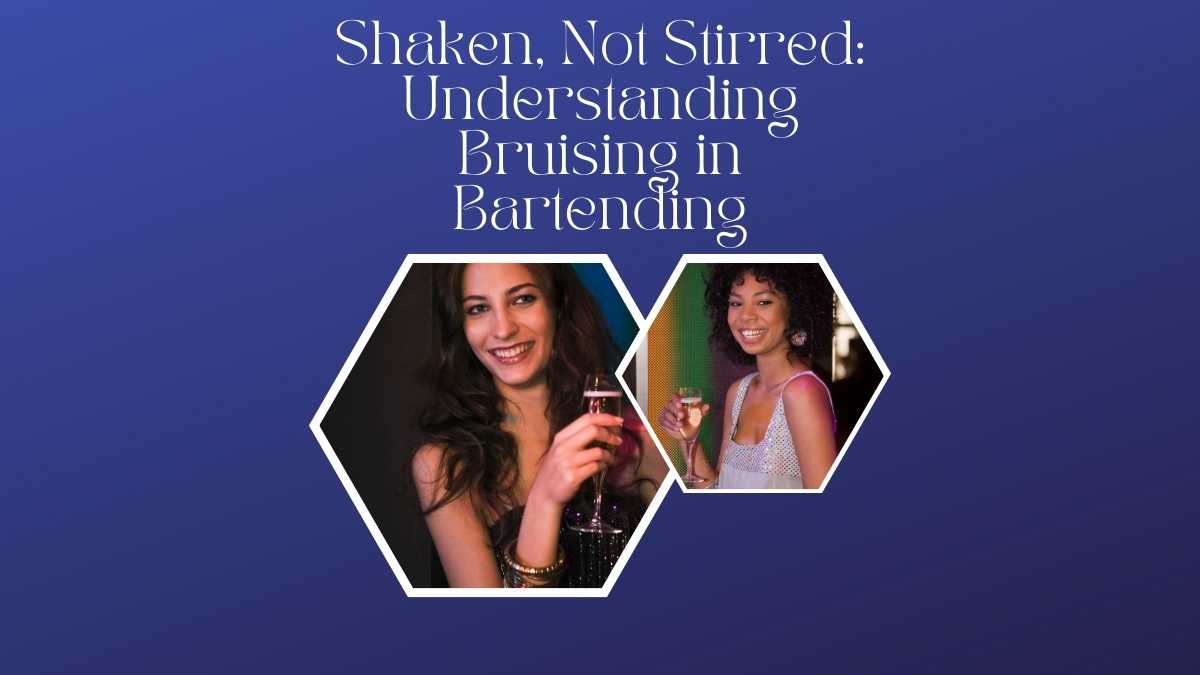Bruising in bartending refers to the process of breaking down the fibers of certain ingredients when making cocktails, specifically when using a shaker or a muddler. This process releases the essential oils and flavors of the ingredients, creating a more complex and nuanced taste in the final drink.
What is Bruising?
Bruising is the process of breaking down the fibers of certain ingredients when making cocktails, specifically when using a shaker or a muddler. When ingredients like mint or basil are shaken or muddled, their cell walls are ruptured, releasing the essential oils and flavors that are trapped inside. This process is called bruising, and it can have a significant impact on the taste and aroma of the final drink.
Why is Bruising Important in Bartending?
Bruising is important in bartending because it allows for the full expression of the flavors and aromas of certain ingredients. Without bruising, the flavors and aromas of ingredients like mint or basil would remain trapped inside the cells, resulting in a less complex and nuanced taste in the final drink. By breaking down the fibers of these ingredients, bartenders are able to release the full potential of the flavors and aromas, resulting in a more balanced and satisfying cocktail.
Bruising can also be used to change the texture of a drink. Bruising ingredients like cucumber in a shaker can add a refreshingly light, watery texture to a drink. The broken cell walls release the natural water content and therefore the drink gets a different texture.
How to Bruise Ingredients?
Bruising ingredients can be done in a variety of ways, but the most common method is through shaking or muddling. When shaking, it is important to use a shaker that is made of metal, such as a Boston shaker, as metal is more effective at breaking down the fibers of ingredients than plastic or glass. To muddle, use a muddler, a specialized tool made for the purpose of bruising ingredients, and press the ingredients against the bottom of the shaker or mixing glass.
It is important to note that not all ingredients should be bruised. Bruising ingredients like citrus fruits will release unwanted bitter notes and affect the overall balance of the drink.
What is the difference between muddling and shaking?
Muddling is the process of using a muddler, a specialized tool, to press ingredients against the bottom of the shaker or mixing glass. This method is typically used for ingredients like mint, basil, and fruit. Shaking, on the other hand, is the process of using a shaker to agitate ingredients, which can be useful for ingredients like cucumber, ginger, and syrup.
Can I bruise ingredients with a blender?
While a blender can be used to puree ingredients, it is not typically used for bruising ingredients. A blender does not create the same level of agitation as a shaker or a muddler, and therefore may not be as effective at breaking down the fibers of ingredients.
What are some common ingredients that are bruised in bartending?
Some common ingredients that are bruised in bartending include mint, basil, ginger, cucumber, and fruits like strawberries and raspberries.
In conclusion Bruising is an important technique that a bartender can use to add complexity, depth of flavor and texture to a drink. it’s a simple and effective way of releasing the full potential of ingredients and creating delicious, balanced cocktails. As a bartender, it’s important to know when to bruise and when not to bru
